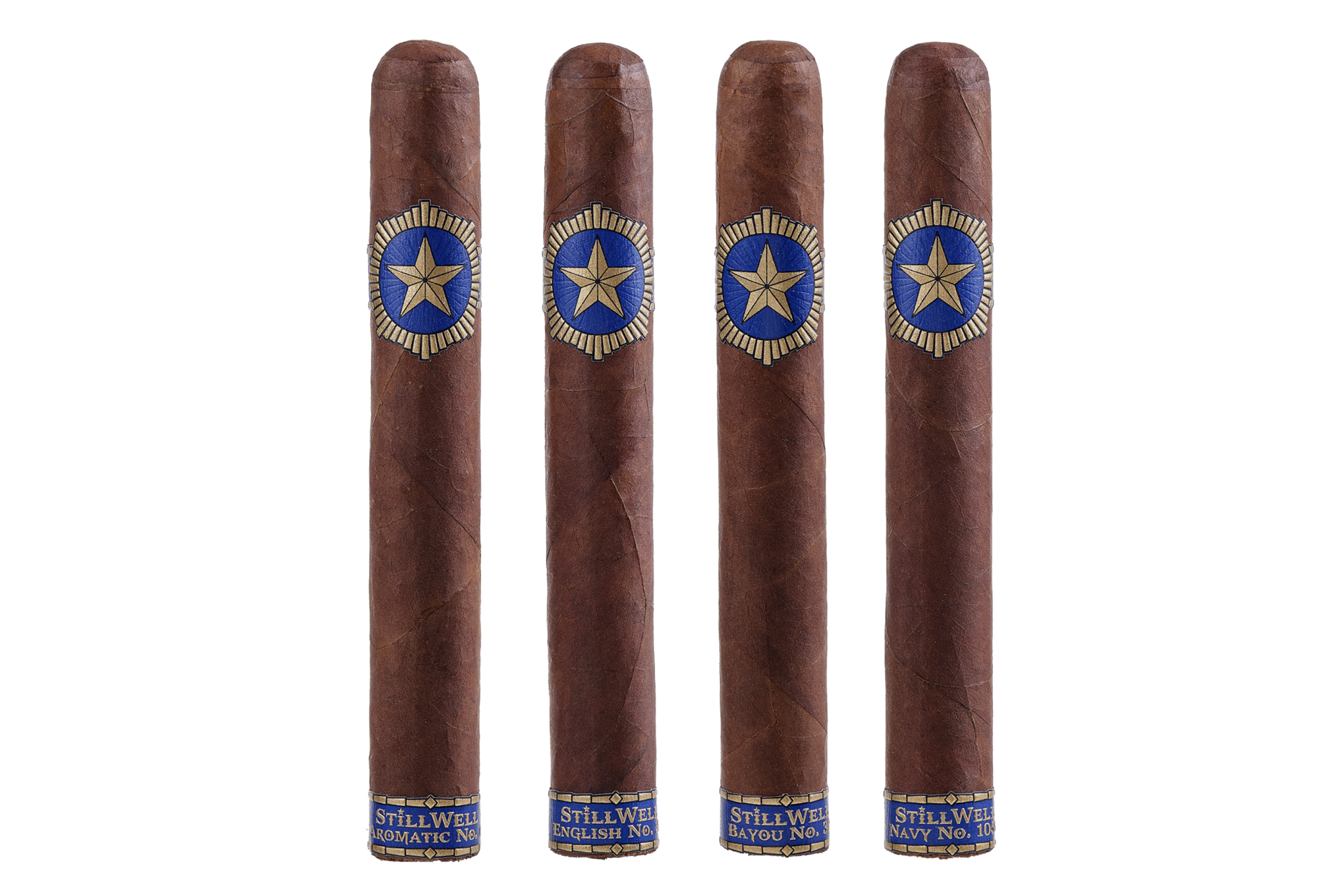One of the questions that I’m generally asked by people who don’t smoke cigars has to do with all tobacco being the same. Essentially, they think that the tobacco used for a premium cigar is the same as that in cigarettes, pipes and chewing tobacco. While there is probably some commonality at a genetic level, in practical terms they are quite different.
That, along with a number of other factors, have generally meant that there is little overlap between the segments, particularly when it comes to premium cigars using tobaccos generally destined for other products. But that doesn’t mean that there haven’t been crossover products, notably with premium cigars dabbling with pipe tobacco being included in the filler in hopes of providing a unique flavor and aroma combination. Those cigars, however, have generally had trouble finding widespread acceptance for one reason or another.
This summer, Dunbarton Tobacco & Trust decided to try its hand at making cigars with pipe tobacco in the blend, by way of a new line called StillWell Star, which Steve Saka predicted would be “the most controversial cigar released in 2021.”
In a press release, the company said that Saka, its founder and blender, has been a pipe smoker for over three decades, and has been crafting handmade cigars using pipe tobacco for his personal consumption for many years. He told of his practice to Jeremy Reeves, head blender of Cornell & Diehl, and a cigar smoker himself, and the pair began work on a cigar that would use pipe tobacco, one’s product incorporating the other’s, billed as the world’s first luxury pipe tobacco cigar.
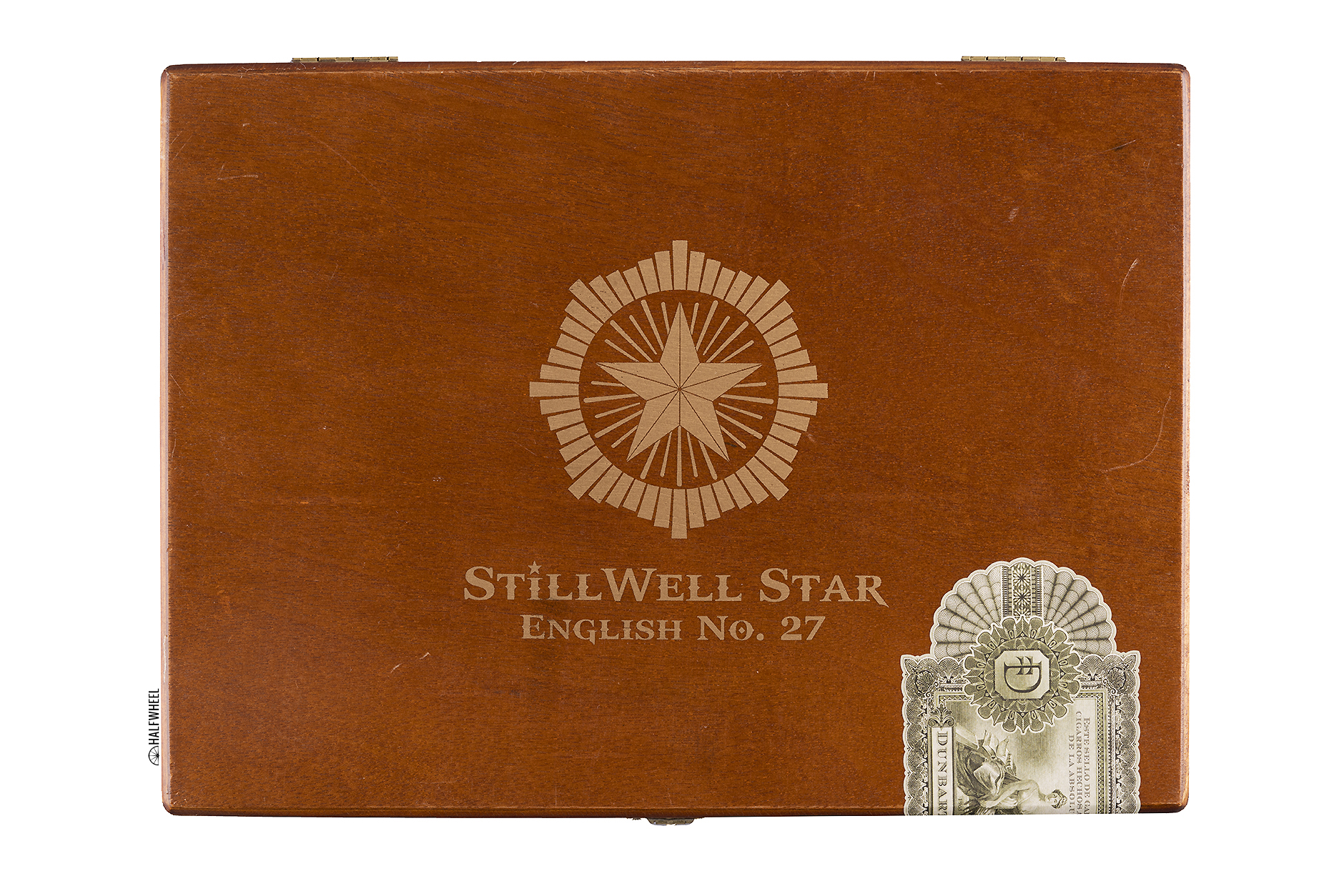
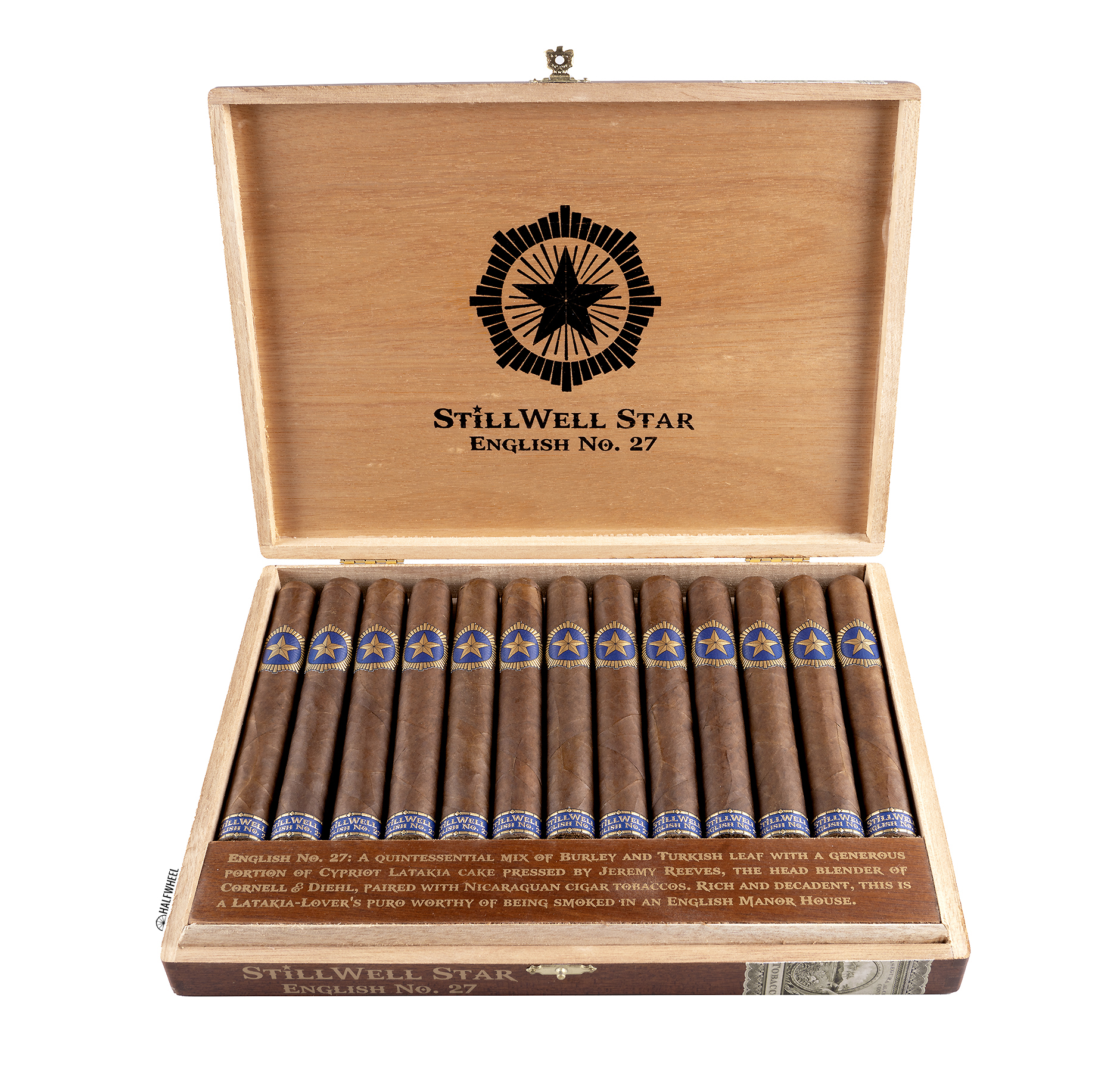
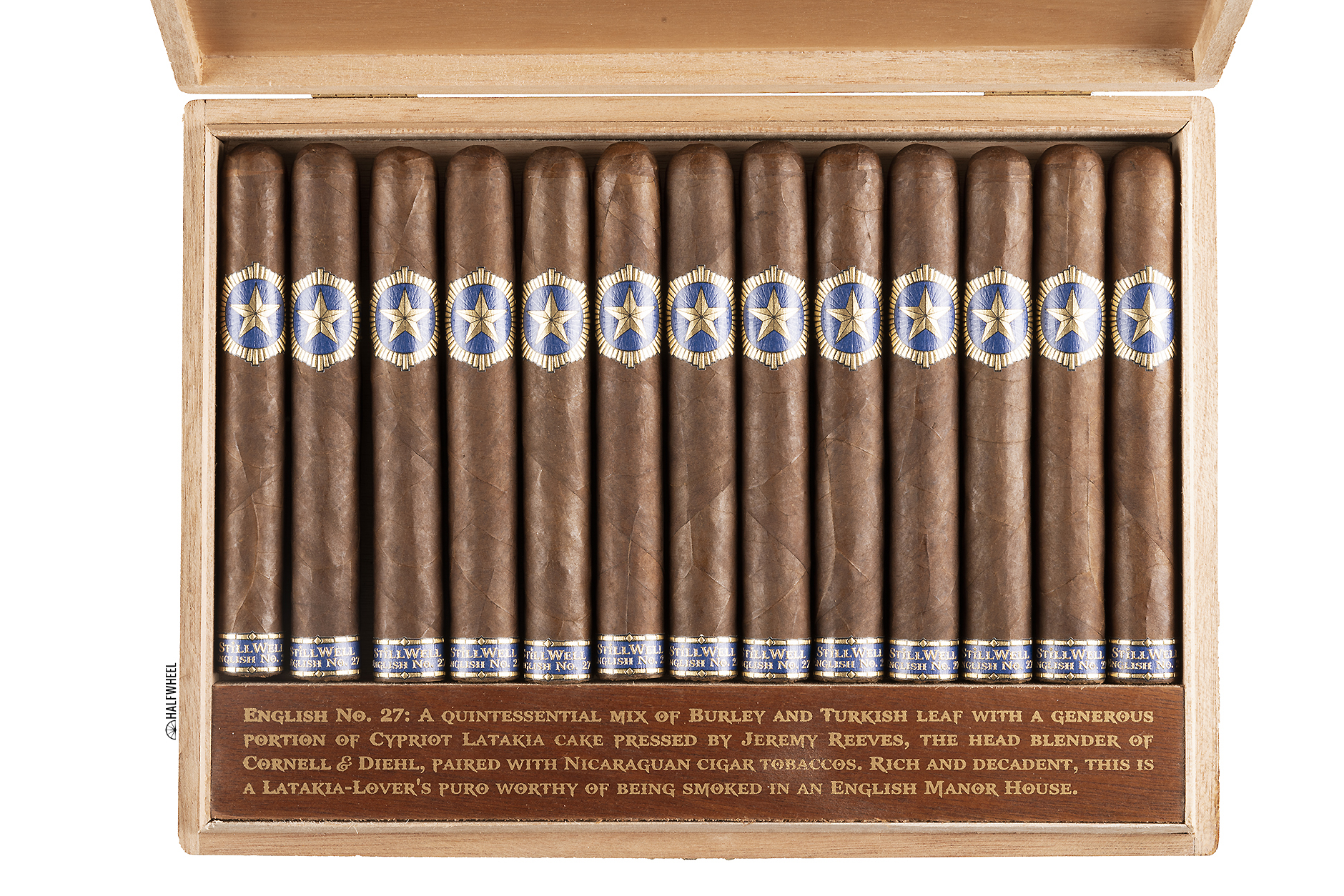
Dunbarton says that the tobaccos used in the StillWell Star are among the finest available and that no expenses were spared in their creation. As for the pipe tobacco, it comes from Cornell & Diehl, which is located in Longs, S.C. and has been producing pipe tobacco since 1990. Using a term familiar to the cigar industry, Cornell & Diehl is described as being a boutique pipe tobacco producer that focuses on quality over quantity according to a press release from Dunbarton Tobacco & Trust.
There are four distinct releases within the StillWell Star line, all of which use a high priming, Ecuadorian habano wrapper and a Mexican San Andrés cultivo tronto negro binder.
Note: The following shows the various StillWell Star vitolas. Some of these cigars may have been released after this post was originally published. The list was last updated on Feb. 2, 2023
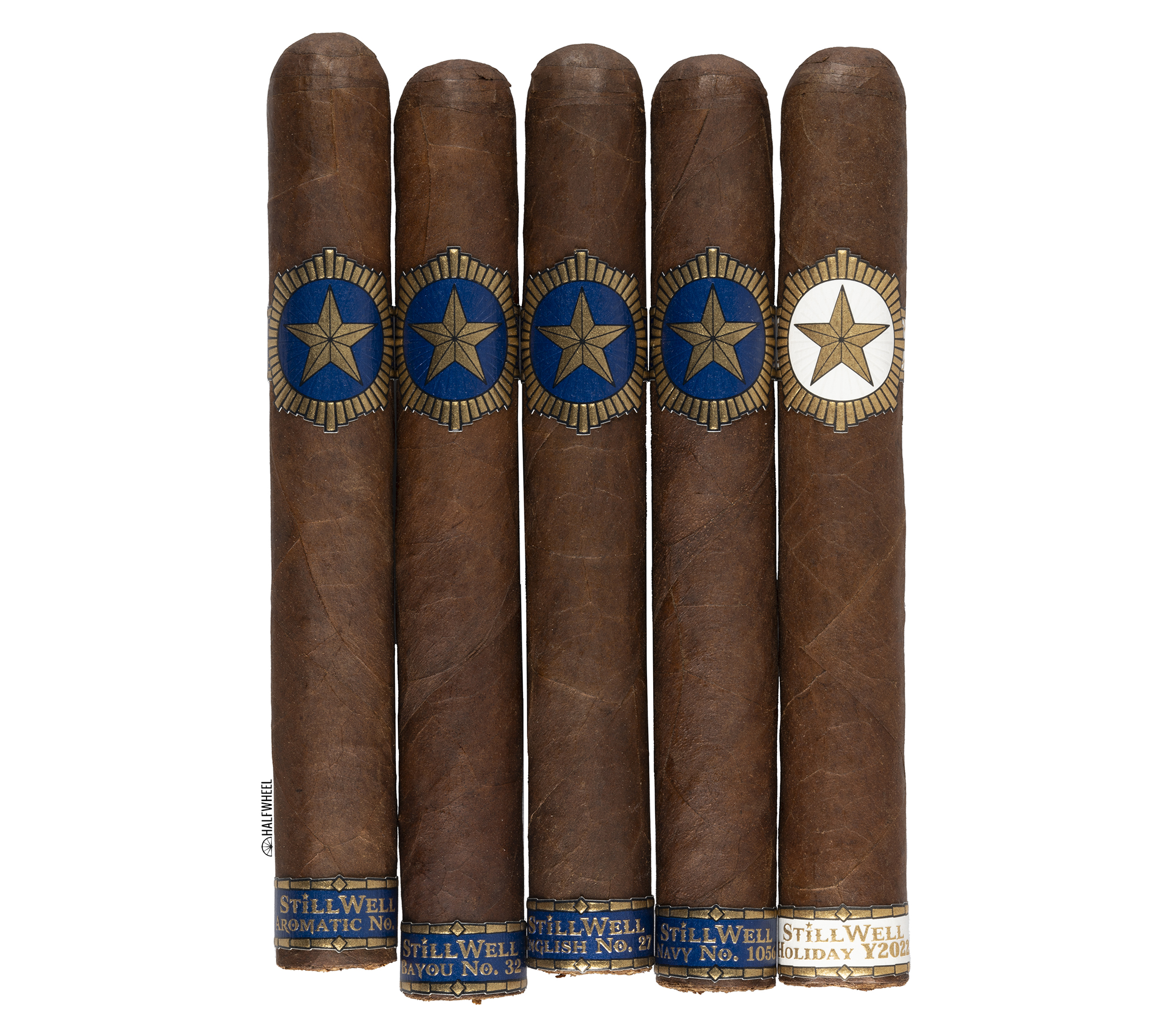
- StillWell Star Aromatic No. 1 (6 x 52) — November 2021 — Regular Production
- StillWell Star English No. 27 (6 x 52) — November 2021 — Regular Production
- StillWell Star Bayou No. 32 (6 x 52) — November 2021 — Regular Production
- StillWell Star Navy No. 1056 (6 x 52) — November 2021 — Regular Production
- StillWell Star LE Holiday Y2022 (6 x 52) — October 2022 — 2,500 Boxes of 13 Cigars (32,500 Total Cigars)
89
Overall Score
Every so often there are cigars that leave me struggling to write up a succinct summary of my experience with them, and the StillWell Star English No. 27 is one of them. As I mentioned above, this is a cigar I wish I had gone into without knowing what it was, to see if there were any suggestions from its profile that there was pipe tobacco in the blend. Knowing the details—at least that it incorporates pipe tobacco—I think I might have been looking for it and thus looking at the cigar in light of how much I found. What I can say is that the StillWell Star English No. 27 is nowhere near a sweetened or infused cigar, and is much more like a traditional cigar that you'd find in Dunbarton's portfolio. That said, there are accents from the pipe tobacco, particularly in the aroma, which are quite good but seemingly too easy to overlook. Some of those accents also make their way onto the palate, and while they were a bit less consistent from sample to sample, when they do appear they are a good addition to the profile. But even without them, the cigar was very good on its own, so don't think that the puffs without the pipe tobacco's contributions aren't enjoyable. Where I struggle is with whether or not I feel like there should have been more pipe tobacco in the blend so that the profile was more truly distinctive, as I found this much more like a traditional cigar. I'm definitely interested in comparing experiences with the StillWell Star line with my pipe-smoking friends, as well as revisiting it in a few months to see if time will give the pipe tobacco the opportunity to contribute a bit more prominently and consistently. This is a cigar that is certainly worth a try, though my experience suggests tempering the expectation of tons of pipe tobacco flavors, as I found them used as accents more than key components.
The fillers of the cigars are all different, something attributed to the fact that the StillWell Star line uses four different pipe tobaccos in the filler, as described by the company:
- Aromatic No. 1 — The finest of aromatic Black Cavendish, Golden Virginia and Burley pipe tobaccos added to a mild, Nicaraguan puro to provide a delightfully smooth and room pleasing smoking experience. Each cigar is delicately finished with a cabeza dulce. Mild-medium.
- English No. 27 — A quintessential mix of Burley and Turkish leaf with a generous portion of Cypriot Latakia pressed cake paired with Nicaraguan cigar tobaccos. Rich and decadent, this is a Latakia-lover’s puro worthy of being smoked in an English Manor House. Medium-full.
- Bayou No. 32 — A combination of Bright and Red Virginia leaf with the most select St. James Parish Perique pipe tobacco added to a medium-bodied Nicaraguan puro. It rewards the smoker with a classic yet entrancing, any time of the day relaxing experience. Medium-plus.
- Navy No. 1056 — A crumble cake of stoved Red and Golden Virginias with a touch of “Naval Rations” combined with Orientals and Latakia expertly blended with dark aircured black cigar leaf, this puro rewards the smoker with a unique, aromatic indulgence. Medium.
Dunbarton Tobacco & Trust noted that each blend is unique and distinct, though noted that smokers will likely pick them up in different ways. “An experienced pipe smoker can clearly discern the flavors typically associated with the classic style of each pipe blend, while the cigar smoker can enjoy these nuances in their preferred smoking format,” the company wrote in a press release.
As for the name, Saka told halfwheel that “StillWell” is a “Frankenstein-ing of the phrase, ‘Be Still. Be Well’ as this is how this cigar makes me feel when I smoke it.” The line is made at Fábrica de Tabacos Joya de Nicaragua S.A. in Estelí, Nicaragua.

- Cigar Reviewed: StillWell Star English No. 27
- Country of Origin: Nicaragua
- Factory: Fábrica de Tabacos Joya de Nicaragua S.A.
- Wrapper: Ecuador (Habano)
- Binder: Mexico (San Andrés Negro Cultivo Tronto)
- Filler: Nicaragua, Burley, Turkish, Cypriot Latakia Pressed Cake
- Length: 6 Inches
- Ring Gauge: 52
- Vitola: Toro
- MSRP: $15.30 (Box of 13, $198.89)
- Release Date: Nov. 5, 2021
- Number of Cigars Released: Regular Production
- Number of Cigars Smoked For Review: 3
There’s nothing about the StillWell Star English No. 27 from a visual perspective that would offer clues to its unique composition, at least not to my non-pipe smoking eye. The foot band does make mention of the blend, though without a knowledge of pipe tobacco it goes over my head like a reference to a movie I haven’t seen. The wrapper leaf looks fairly familiar with a fairly dark, even brown color. There’s not a lot of oiliness to the wrapper but there is some tooth, while the veins are average and unobtrusive, and my fingers find a bit of an oily, maybe even waxy, texture. The roll is firm and the cigar looks on par with any other, as the seams are generally flat but not perfect, and the caps are well constructed. The more the cigar sits in front of me, the more I pick up something from the aroma that suggests something about the blend is distinctly fragrant, though it’s nowhere near my experiences with flavored or infused cigars. When I finally put my nose to the foot of the cigar, I pick up the source of the aroma, and it is definitely unique. It has me thinking of a strawberry-based jam at first, but emphasis on based as it is not overly sweet. While distinct, it’s not so far out of the ordinary that I’m curious or fearful as to what it might be, and a familiar aroma of wheat bread comes along right behind it, with one cigar adding in some dehydrated apples. The cold draw is more subdued with its clues and offerings: it’s almost a soft muffin flavor with a bit of berries, and just a touch of pepper trailing behind. Air moves well, seemingly picking up a bit of oiliness from the muffin flavor to give the air a smoothed pathway.
The StillWell Star English No. 27 starts off with some fairly familiar puffs that offer black pepper, a bit of earth, and some of that berry sweetness from before, though now a bit warmer. This is a cigar that makes we wish we did blind reviews, as I know that it has pipe tobacco in the filler—though I don’t know what to expect from that component—but I would be interested to know what I thought of the cigar if I didn’t have that bit of knowledge. That said, it’s not long into the cigar where I get the first puffs that suggests there may be more than traditional cigar tobacco in the blend, and it’s by way of the aromatics of the aroma, which is interesting because one place where I don’t notice a huge presence of the pipe tobacco is through my first retrohales, at least not enough of a presence to catch my attention. In the retrohales, there is pepper and a bit of chalk on top of earthiness, a profile that is quite familiar, whereas the aroma has something that reminds me of tea leaves and sappy wood. I tap off the ash as I write that last sentence, then take another retrohale, and of course find it is much more vibrant than initially thought, though not inherently different, except that I could make the case that the lingering aroma in my nostrils has something about it that suggests a unique type of tobacco. Both there and on the palate, I find a bit of damp cedar and what I’m inclined to think of a concentrated black tea, a flavor that stands out when it’s there, but I only note it as being prominent in one of the three samples. Combustion has been very good thus far, even though the burn line is just a bit off. Smoke production is plentiful if not billowing and the draw is effortless. Flavor and body are both medium-plus, while strength is just shy of medium.

As the StillWell Star English No. 27 gets into its second third, I’m immediately thinking of the note Saka included in the promotional materials about how pipe smokers will perceive this cigar differently from how cigar smokers will. By the second third, I certainly wish I had more of an understanding of and experience with pipe tobacco, as I have to think it would only make me appreciate the cigar more. For my palate, the flavors or aromas that would suggest pipe tobacco aren’t brimming out of the smoke, and while there have been some notes here and there, only one cigar has offered enough to plant the seed. That said, I’d be remiss not mentioning that the blend is very good on its own, certainly on par with other cigars in the Dunbarton portfolio with an earthy, peppery profile that I’d have no issue enjoying without the pipe tobacco component. In one sample, I find that the aroma is where to find what I think is the pipe tobacco’s contributions, as it definitely smells just different enough from other cigars, with black tea and cedar the primary components. By the midpoint of two of the three samples, there’s enough evidence to suggest that there’s something unique about the blend, as there are points where the smoke feels thicker and maybe a touch oilier than average, and the smoke from the resting cigar has a unique aroma that now seems a bit more like fragrant damp wood, with a bit of the berry aroma from earlier. In the second cigar, it takes until the cigar gets past the midway point for me to pick up enough to have me thinking there’s pipe tobacco in the blend, as an amber sweetness suddenly inserts itself into the profile. It’s fleeting but quite enjoyable, and while I think I’d enjoy more of it, I don’t think I would want the cigar to be dominated by it. Flavor is closer to medium than it was in the first third, body is still medium-plus, and strength is medium at most. Construction is very good and problem-free.
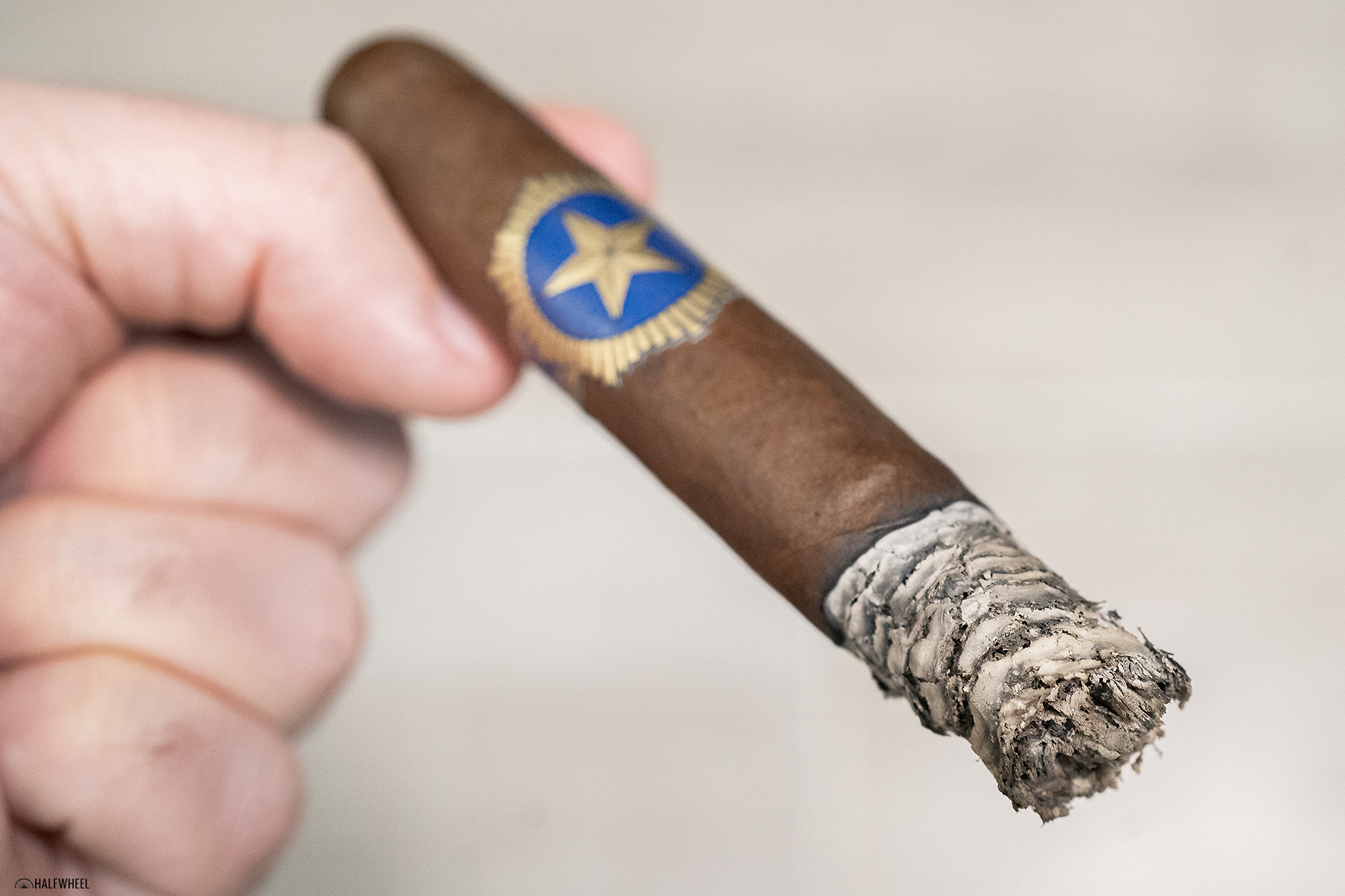
At the start of its final third, the StillWell Star English No. 27 sees its hints of pipe tobacco retreat, while the core profile generally remains. I say generally because one cigar takes a sharp turn and becomes dry, thin, sharp and slightly metallic, with that last note giving me the telltale sign of some tar making its way to the head, and when I rub my thumb across it, the brown streak confirms my suspicion and leads me to clip off a bit more to remove it. That doesn’t seem to affect the retrohales, which still have an earthy, black pepper-laden profile and are quite good, a consistent aspect of the cigar that I can return to at almost any point for a grounding sensation that resets the experience. The profile seems to begin its conclusion fairly early into the final third, as the finishing inches are much more familiar, seemingly having shed most if not all of the pipe tobacco suggestions from earlier. That applies to the aroma as well, as it would take a stretch of my imagination to pull out any of the black tea and cedar aromatics from earlier. There is a bit more gruffness from the profile that makes me think of Nicaraguan-dominant blends, with a bit of black pepper hitting the back of the throat, a good signal that it’s time to put the cigar down.
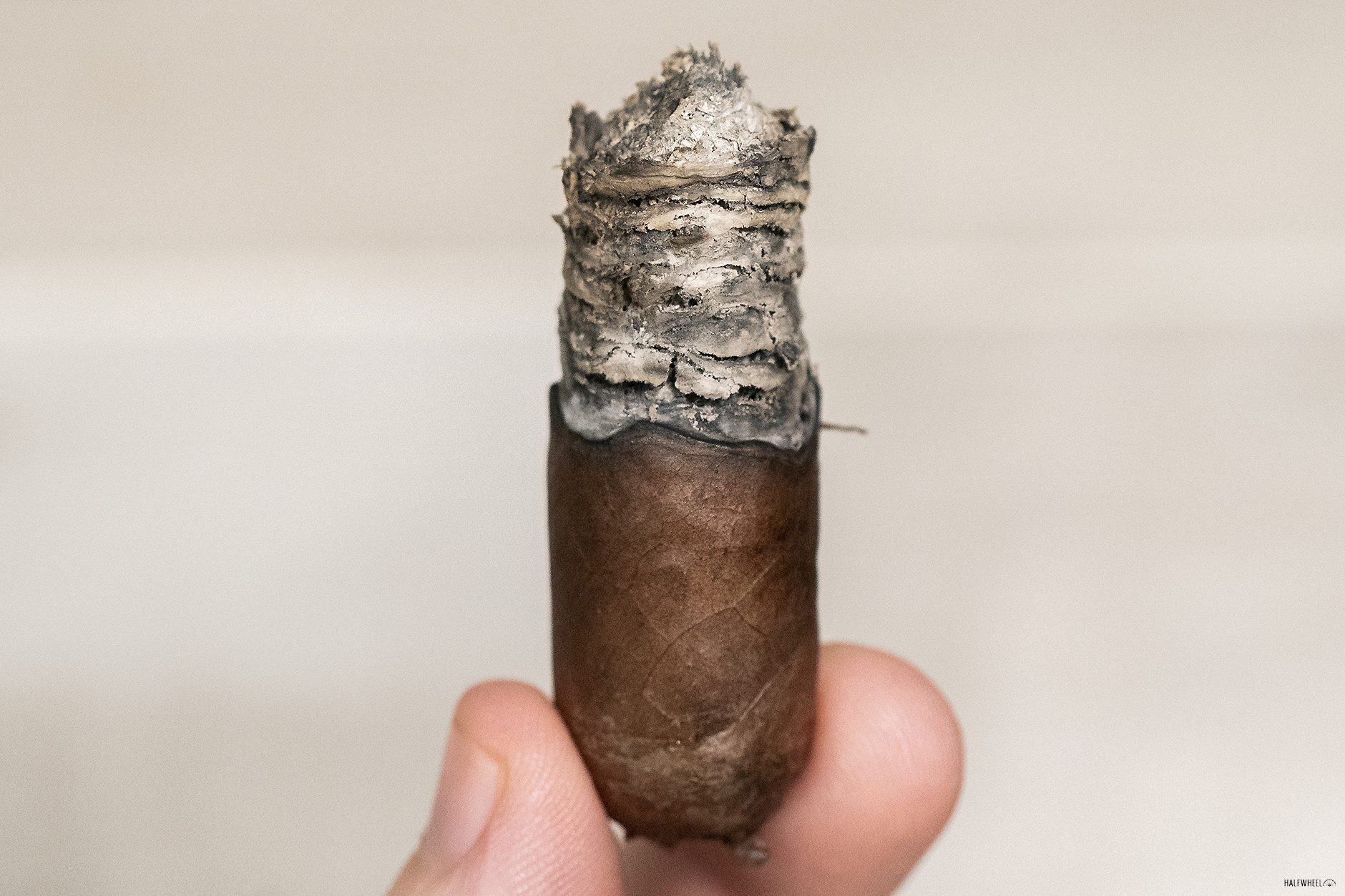
Final Notes
- Many of you know I also work in baseball and am a fairly big fan of the game, so this won’t come as a surprise, but as soon as I heard about this cigar, my thought immediately jumped to the character Stilwel Gardner in the movie “A League of Their Own.”
- What you might not know is that I have never smoked a pipe, and honestly can’t say I have much of a desire to. I would say that it would be interesting to experience this cigar with the background of a pipe smoker.
- In some of his earlier communication with halfwheel about StillWell Star, Saka referenced “the first four” in the line, which would seemingly leave the door open to more options in the future.
- As part of this review, I did something I never do, and that’s stick my nose in the plastic bag in which these were stored to see what kind of aromas might be hanging around. There were definitely some, and if I had to envision what the pipe tobacco used in this cigar might smell like, this is it. I don’t think I know the ideal words to put to it, but it is thick, aromatic and slightly woody and sweet.
- Editor’s Note: For those wondering about whether these cigars can be stored next to other cigars in a humidor, I am not sure I would recommend storing loose singles out of cellophane next to traditional cigars, though when the cigars are in the box and the box is closed, there’s no detectable aroma. — CM.
- That said, I should mention that our scoresheet does not have a section for aroma, which I am generally in agreement with. However, I have to think that a cigar like this would benefit from such a section.
- If given these three specific cigars and told they might or might not contain pipe tobacco, only one had enough about it to make me think it had something beyond traditional cigar tobacco. One had hints, while one showed hardly anything that would make me think it wasn’t a traditional blend.
- I can’t say that any of the three samples had much if any nicotine strength to them, as I didn’t feel any indications from them.
- Dunbarton Tobacco & Trust advertises on halfwheel.
- The cigars for this review were purchased by halfwheel. Dunbarton Tobacco & Trust also sent me samples of the four blends, but they were not used for this review.
- Final smoking time was two hours and 15 minutes on average.
- Site sponsors Cigar Hustler, Corona Cigar Co., Famous Smoke Shop and JR Cigar carry the StillWell Star English No. 27.
89
Overall Score
Every so often there are cigars that leave me struggling to write up a succinct summary of my experience with them, and the StillWell Star English No. 27 is one of them. As I mentioned above, this is a cigar I wish I had gone into without knowing what it was, to see if there were any suggestions from its profile that there was pipe tobacco in the blend. Knowing the details—at least that it incorporates pipe tobacco—I think I might have been looking for it and thus looking at the cigar in light of how much I found. What I can say is that the StillWell Star English No. 27 is nowhere near a sweetened or infused cigar, and is much more like a traditional cigar that you'd find in Dunbarton's portfolio. That said, there are accents from the pipe tobacco, particularly in the aroma, which are quite good but seemingly too easy to overlook. Some of those accents also make their way onto the palate, and while they were a bit less consistent from sample to sample, when they do appear they are a good addition to the profile. But even without them, the cigar was very good on its own, so don't think that the puffs without the pipe tobacco's contributions aren't enjoyable. Where I struggle is with whether or not I feel like there should have been more pipe tobacco in the blend so that the profile was more truly distinctive, as I found this much more like a traditional cigar. I'm definitely interested in comparing experiences with the StillWell Star line with my pipe-smoking friends, as well as revisiting it in a few months to see if time will give the pipe tobacco the opportunity to contribute a bit more prominently and consistently. This is a cigar that is certainly worth a try, though my experience suggests tempering the expectation of tons of pipe tobacco flavors, as I found them used as accents more than key components.
I strive to capture the essence of a cigar and the people behind them in my work – every cigar you light up is the culmination of the work of countless people and often represents generations of struggle and stories. For me, it’s about so much more than the cigar – it’s about the story behind it, the experience of enjoying the work of artisans and the way that a good cigar can bring people together. In addition to my work with halfwheel, I’m the public address announcer for the Colorado Rockies and Arizona Diamondbacks during spring training, as well as for the Salt River Rafters of the Arizona Fall League, the WNBA's Phoenix Mercury and previously the Arizona Rattlers of the Indoor Football League. I also work in a number of roles for Major League Baseball, plus I'm a voice over artist. Prior to joining halfwheel, I covered the Phoenix and national cigar scene for Examiner.com, and was an editor for Cigar Snob magazine.










